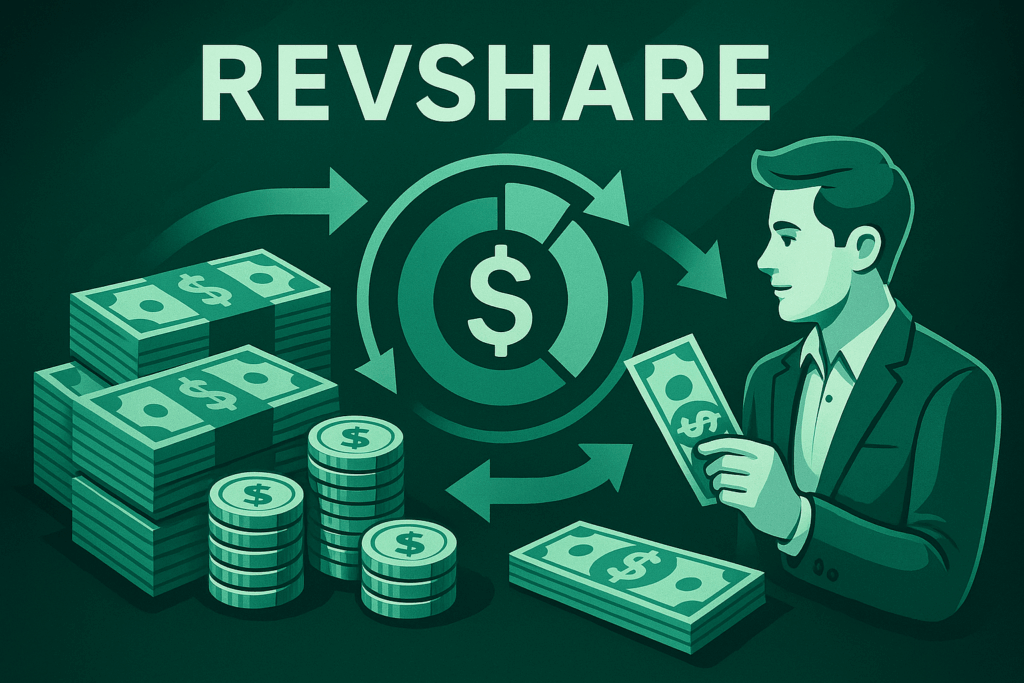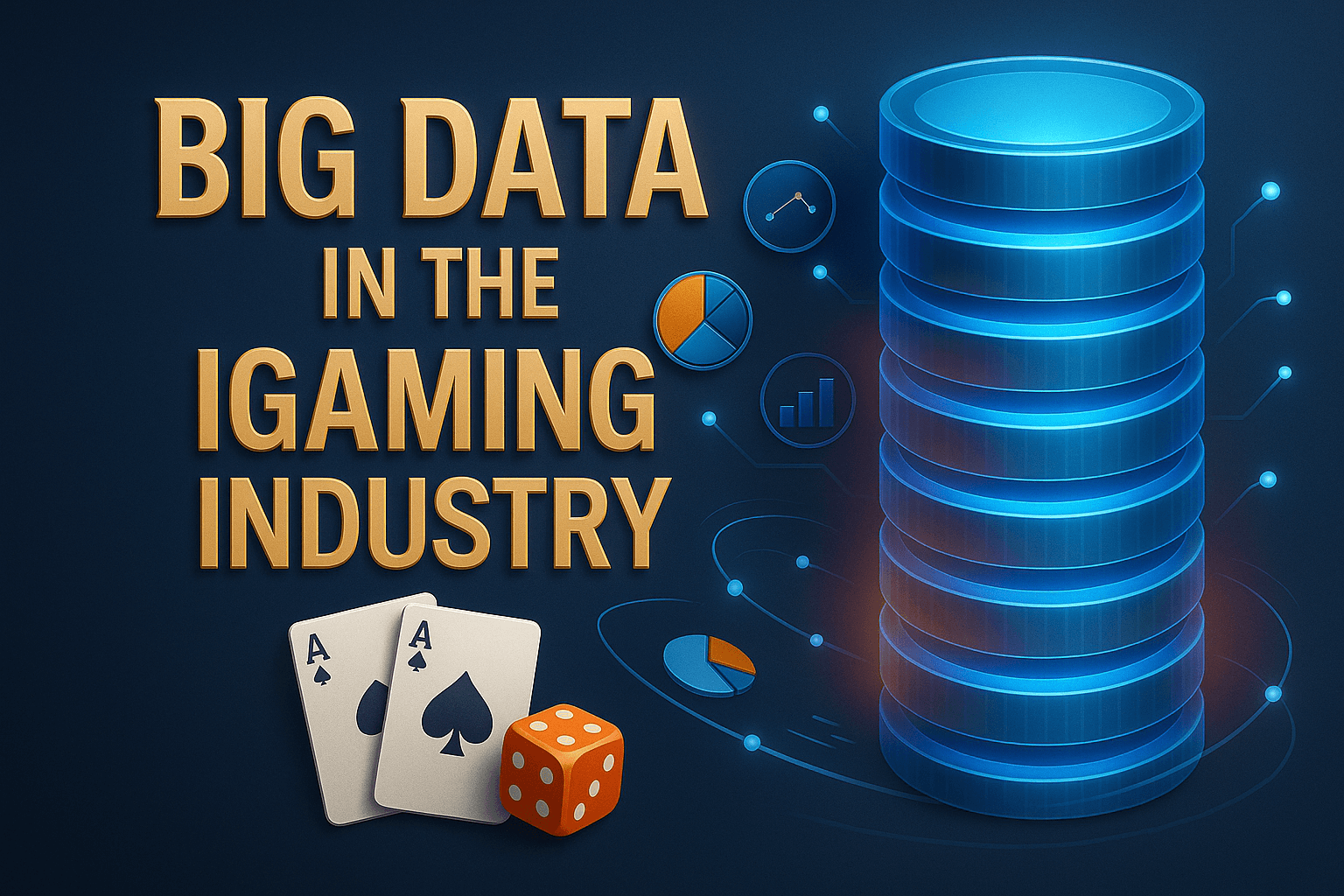Last Updated on September 25, 2025 by Caesar Fikson
RevShare feels almost quaint — an old-school commission structure we all tinkered with back when pixel tracking was still cool. Yet here we are in 2025, watching operators quietly re-embrace revenue sharing while attribution wars rage on.
At NowG, the data is impossible to ignore: lifetime-value upside from a single high-roller dwarfs whatever flat CPA you could wrestle out of procurement last quarter.
Remember when we celebrated any program brave enough to offer 35 % on first-time deposits?
Today, tiered deals routinely start at 40 % and climb to 55 % once volume thresholds kick in.
That swing is widening because player retention tech has matured, churn prediction is better, and VIP hosts have finally figured out how to keep whales swimming in your pond, not the competitor’s.
So what, exactly, is RevShare in 2025?
Strip away the jargon and it’s simply a contractual promise: the operator splits net gaming revenue (NGR) generated by each referred player with the affiliate for as long as that player wagers. NGR typically equals gross bets minus winnings, payment fees, bonuses, and (yes, the dreaded) taxes. The split can be fixed (say, 40 %) or tiered. On paper, that’s elementary. Under the hood, implementation is anything but.
Picture an affiliate manager juggling multiple attribution models, three wallet providers, and five geos with wildly different tax treatments. She’s rolling live cohort data into a dynamic commission engine that recalculates profit share in real time. One player triggers fraud checks, another activates a seven-day cool-off required by local regulation, and the CRM quietly downgrades a third after detecting bonus abuse. All those adjustments hit the ledger before your RevShare is finalized. Lose sight of any variable in that chain and your “expected 45 %” melts to 28 % overnight. Frustrating? Absolutely.
Why RevShare Is Back on Top — and Not Just for Casinos
Truth be told, cost-per-acquisition looked unbeatable when operators were hyper-focused on land-grab growth. Fast cash, predictable risk. But 2025’s boardrooms obsess over gross profit per active user, not head-count vanity metrics. That shift sets RevShare up for a renaissance.
Affiverse calls it “the comeback of hybrid and revenue-share deals,” noting that operators now bolt a small CPA onto a trimmed but recurring share precisely because quality trumps quantity. The small CPA offsets acquisition cost, and the RevShare component keeps the affiliate invested in LTV. Everybody wins—assuming your attribution plumbing is watertight.
Let’s face it: attribution in 2025 is still maddeningly imperfect. LinkedIn chatter last week summed it up: “Most marketers don’t understand proper ad-spend attribution… blind trust, according to Evan Caroll, in data is killing ROI”. In other words, until every click and every cost is stitched together in real time, operators hedge their bets with revenue splits that self-correct over a player’s lifespan.
Smart.
The Nitty-Gritty Mechanics Nobody Tells Beginners

Negative carry-over
Some programs zero out negative balances monthly; others let losses accumulate until a player’s wagers turn positive. If you’re signing RevShare deals in loss-heavy verticals (sports-betting during an underdog streak, anyone?), clarify that clause or risk a year-long crawl back to zero.
Lifetime vs. limited-term
“Lifetime” often translates to “as long as the brand exists and the player remains active.” Limited-term variants (12 or 24 months) are cropping up in SaaS affiliate programs because churn is predictable and boardrooms dislike open-ended liabilities.
Bundling products
Cross-sell can dilate your RevShare. A poker-first deposit might deliver 30 %, but if that same account later hits the sportsbook, the blended rate could drop unless your contract pegs each vertical separately.
Dynamic tiers
Real-time attribution tools like Cometly or Ruler Analytics feed net-revenue deltas straight into affiliate dashboards, updating your tier position daily. Handy, but emotionally taxing when you watch commissions slide mid-month.
Show Me the Money (A Table Beats Ten Bullet Points)
| Model | Cash-Flow Timing | Risk Profile | Typical % or Payout | Best Use Case | Hidden Landmines |
|---|---|---|---|---|---|
| RevShare | Monthly, recurring | Shared; revenue volatility | 30 – 55 % of NGR | High-LTV niches (casino, SaaS) | Negative carry-over; sudden VIP wins |
| CPA | Up-front, one-off | Operator-heavy | €80 – €250 per FTD (iGaming EU) | High-volume lead-gen, volatile markets | Low upside if LTV explodes |
| Hybrid | Small CPA + lower RevShare | Balanced | €40 CPA + 20 % NGR | Mature geos where acquisition costs soar | Complex accounting, diluted focus |
| Tiered RevShare | Recurring, scale-incentivized | Shared; smoothed by volume | 30 % entry → 55 % 200+ actives | Large content networks | Drops to base tier after inactivity |
Strategy Clinic: Maximising RevShare Like a Veteran
First, zoom out. Revenue share success isn’t about driving clicks; it’s about nurturing profitable cohorts. Start by segmenting traffic with machine-learning models that predict deposit size versus churn risk.
Feed those predictions into your funnel so whale leads hit bespoke landing pages, while bonus hunters see offer light. We’ve observed a 17 % uplift in average NGR per player after implementing dynamic content swaps across three regulated markets (yes, even with GDPR consent banners flaring).
Second, integrate your analytics stack. Real-time API drops into dashboards mean you know exactly when a campaign plateaus. Nothing kills momentum faster than stale data. AttributionApp’s 2025 guide bangs the drum on hooking up every impression, click, and cost to one pipeline, according to attributionapp.com. When you spot margin decay early, you can tweak creative or reallocate spend before the month becomes a write-off.
Third, automate retention nudges. Affiliates historically cede re-engagement to operators, but why not bake a triggered email sequence that pushes semi-dormant players back into the app via your own tracking link? Yes, you’ll cannibalize some operator loyalty comms, yet you reclaim a slice of the pot that would otherwise evaporate. It’s game-changing when a “we miss you” email converts at 11 % and the resulting revenue lands under your code, not the brand’s generic CRM bucket.
Have you considered the downstream impact of switching attribution methods mid-quarter?
If your program pivots from last-click to multi-touch, historical RevShare baselines crumble, projections mis-fire, and CFOs panic. Bake change-management into your contract: insist on dual-tracking overlap so you can reconcile anomalies before finance freezes payouts. Nothing’s more embarrassing than fighting an operator over a – €4,300 negative carry because a data mapping glitch double-counted bonuses.
Finally, keep compliance friends close. Regulation keeps metastasizing (Germany’s State Treaty update, the Netherlands’ ad-ban tremors, you know the drill). Each new rule chips away at gross gaming revenue, and by extension, your RevShare. The operators willing to grandfather affiliates at pre-regulation percentages are rare—but worth hunting down.
Obstacles Nobody Warns the Newcomer About
- Volatility fatigue
One VIP’s lucky weekend can slash your monthly RevShare by half. Hedge by combining RevShare with a modest, guaranteed CPA on new traffic streams so cash-flow doesn’t crater.
- Tech whiplash
Integrations with real-time attribution tools feel exciting until an API update breaks your postback and entire cohorts go untracked. Monitor with automated heartbeat pings; set alerts for revenue deltas exceeding 20 % day-over-day.
- Partner burnout
RevShare is a marathon. When campaigns plateau, even seasoned affiliates feel stuck. Rotate creative quarterly, test fresh channels (CTV, programmatic audio), and re-scout geos where acquisition costs dipped after regulatory reshuffles.
- Compliance — the party crasher
Yes, slapping age-gate widgets everywhere is irritating. But fines kill more RevShare than weak traffic ever will. Stay ahead of each jurisdiction’s ad code, especially around locally triggered bonuses.
A Quick Anecdote From the Trenches
I remember integrating real-time attribution back in 2018—honestly, it felt futuristic. We’d watch deposit data pour into dashboards while we sipped espresso, thinking we’d solved everything. Then a high-stakes bettor hit a seven-figure slot jackpot. Our shiny RevShare plummeted for three months, wiping out the “perfect” attribution we’d chased.
The lesson?
Data clarity doesn’t eliminate revenue swings; it just exposes them faster. And that visibility, uncomfortable as it can be, lets you course-correct before CFO panic emails flood your inbox.
Looking Forward: RevShare’s Shape-Shifting Future
RevShare will keep mutating. AI-driven dynamic percentage models are already in closed beta with two tier-one operators I can’t name (NDA purgatory); rates flex daily based on segmented LTV, not static tiers. Imagine a smart contract on the blockchain that auto-adjusts your share each midnight based on player cohort health. Exciting? Terrifying? Probably both.
Here’s the bottom line: RevShare is neither beginner-friendly nor obsolete. It’s a living, volatile organism that rewards affiliates who obsess over attribution hygiene, retention craft, and compliance chess. Are you ready to treat revenue sharing not as passive income but as an active, data-driven partnership that reinvents itself every quarter?



